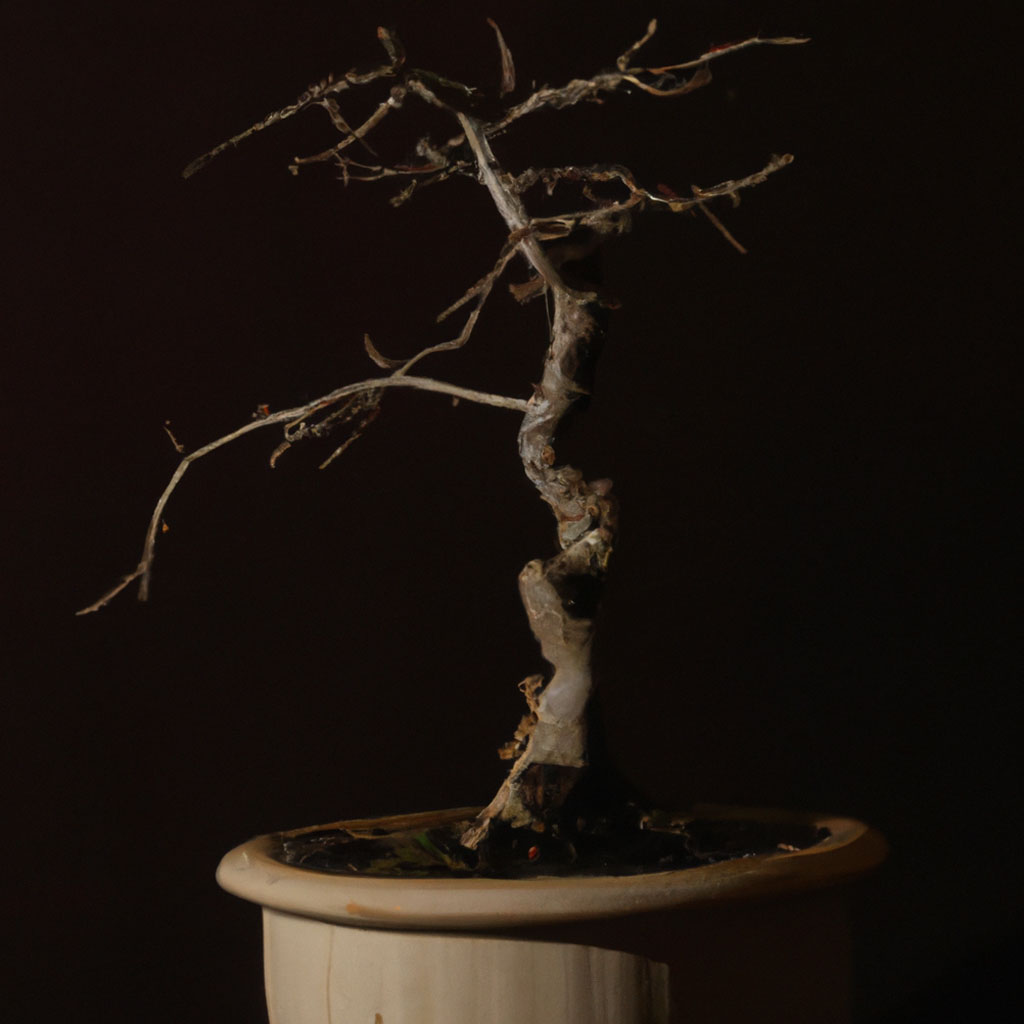Trees are like pets to some of us. When the precious bonsai tree dies which we have grown from the beginning or bought, it’s very sad. Here we will talk about how you can revive your dead bonsai tree.

Somehow your bonsai dies (quite common) and you are wondering if there are any possibilities to revive it. The simple answer is if there is a little bit of life left in the bonsai there is a high hope you can revive it. If there is no life left simply you can’t give it a new life (sad to say).
There is a complex situation, if you do not try to revive it, how you will know if life is left in the bonsai tree or not? Because we often see a dried stem that looks dead, generating new leaves in the humid environment. The same goes for your bonsai, it may look like dead but it can still hold life in it which is waiting for your proper care and attention to be revived and give you back your favorite bonsai.
There are some rules to follow to revive your dead bonsai. Pointing the problem and giving the solution we will discuss it.
But what if our all hard work to revive the tree goes in vain, what if the tree never wakes up? Well, there is a high chance this can happen but if your tree revives it will pay off your hard work. So doing something is better than doing nothing.
- The reasons behind the death of the bonsai
- How to revive a dead bonsai tree
Let’s learn the process and apply it without thinking.
The reasons behind the death of the bonsai
First, you have to know about the bonsai you want to revive such as where the tree is native to, which climate it prefers to live in, and which temperature, light, and humidity it prefers most. Then you will have a clear idea of what caused the death of your bonsai. Here are the most common reasons.
[Deciduous bonsai species go in a dormant period in the winter. Every leaf falls and the tree looks woody and dead (in some cases). Don’t be confused by thinking it has no life. It is just gaining energy to appear again in a new condition.]
The process of reviving will be easier if you learn the care and maintenance of bonsai.
Less watering
Water is essential for every life. Sometimes you go on a vacation or somewhere you can’t water the bonsai if you (who lives alone) want though or you give someone else to take care and he forgets or you forget to water or you become too careless about your bonsai.
Sometimes not watering is okay and understandable but not watering and going against the regular rule of watering for too long is a bad idea that can cause death.
Bonsai need watering every 1 to 2 days depending on the species.
Overwatering
You may become so excited about your new bonsai that you end up more watering than the tree needs. You watered too frequently or you watered before coming next watering time (before the soil dries and water evaporates) or you let the water accumulate in the pot.
In any of those cases, the situation is considered overwatering which can lead to root rot and initial death. This can’t be happening again.
Not enough light or overexposure
Bonsai need the right amount of sunlight to thrive at least 4 to 6 hours of direct sunlight a day depending on the species. Some species prefer direct sunlight some love to thrive in filtered light and some can tolerate darkness. Most of the species need direct bright sunlight to thrive. Grow light can be used as an alternative.
On the other hand, placing under the scorching sun can cause overexposure problems like sunburn, changing the leaves’ color, etc which can lead to death. If you see any overexposure symptoms place it in an area where with filtered sunlight and it can get some shade.
Temperature issues
Most of the bonsai species [normal tree species where they are made from] need the required temperature of 15°C to 27°C not less or more than the requirement, depending on the species. If you live in an area with a cold winter, consider taking it inside to save from frost, and over 32°C is considered overheating. Save from dry weather too. If anything wrong happens with temperature it can lead to trees’ death.
Improper humidity
Keeping the proper humidity level for a tree is more than essential. If the tree is placed near any water resource like a pond then there are no issues. Otherwise, the tree needs humidity resources such as a humidifier and humidity tray. Don’t place it near any heat resources.
Inappropriate soil condition
Bonsai need well-draining soil that holds enough moisture releasing extra water from the soil. The ideal bonsai soil is made from sphagnum moss, perlite, and Japanese bonsai soil akadama with a ratio of 1:1:1. Sticky soil will hold the moisture and accumulate water, causing poor oxygen system to the root and overwatering problem which can lead to root rot.
Over-fertilizing problem
Slow-release bonsai fertilizer is preferable. Applying every 2 to 4 weeks in the growing season and stopping reducing the amount in the dormant period in winter is preferable.
Without knowing the proper fertilization rule for bonsai can cause problems like algae and fungal growth, nutrient burn, root damage, foliage color change, and weak growth.
Reviving process- revive a dead bonsai tree
I hope now you the reason for your bonsai. Be careful about next time it doesn’t happen.

- Step-1 Pruning leaves
Prune every dead stem that looks woody and dry, using sharp tools like pruning shears or branch cutters so that these branches don’t take any nutrition from the tree. Keep where it looks greenish. Keep in mind brown branches can have life too. Remove any dead foliage from the tree and follow the next step.
- Step-2 Repotting
Now it is time to repotting. Remove the tree carefully from the old pot. Prepare a pot with drainage holes, terracotta is preferable as it has the natural ability to absorb the water and keep the soil humid.
Try to extract soil from the root with a stainless steel rake as much as you can. Be careful and don’t rush the process.
- Step-3 Pruning roots
After cleaning the roots see if anything wrong with the roots or not. Healthy roots will be fresh white and dry. Diseased roots will be smelly, and wet and the color will be dark gray to black. If you see any rot in the root cut them with pruning shears. Avoid cutting the main root if you can.
If the roots don’t have any problem they still need pruning because bonsai produces more root than it needs for such a miniature tree. Prune overcrowded roots and clean them with water mixed with carbon peroxide, making sure you don’t leave any diseased area, bacteria, or virus.
- Step-4 Replace with new soil
Now fill the pot with new bonsai soil following the rules given above and plant the tree. Don’t move the tree too much until it produces new roots and holds the soil permanently.
- Step-5 Be regular with the caring process
Give enough care thorough and regular such as proper watering (morning is the best time for watering), light adjustment, fertilization, etc according to the instructions given above.
Wait for 1 to 2 weeks and observe the changes. If the stems become fresh and look a little bit healthier than before then nothing to worry it will produce new branches and leaves. Now go and revive your dead bonsai tree.
If there is no sign of life we suggest be patient and wait a little longer. You will be rewarded.
Read more about the bonsai tree…
